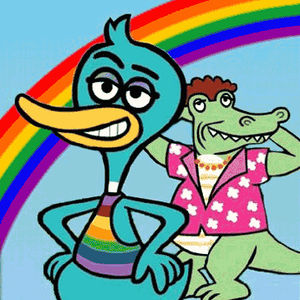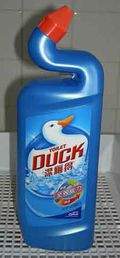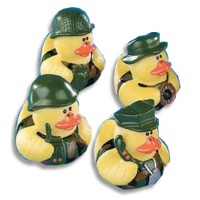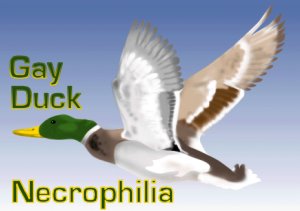Toilet duck
| This article is Illogical enough to have made it onto the front page. View more featured articles |

|
| Toilet Duck | ||||||||||||||||
| Conservation status | ||||||||||||||||
| Vulnerable (IUCN 3.1) | ||||||||||||||||
| Scientific classification | ||||||||||||||||
| ||||||||||||||||
| Binomial name | ||||||||||||||||
|---|---|---|---|---|---|---|---|---|---|---|---|---|---|---|---|---|
| Dendrocygna cloaca (Linnaeus, 1758) | ||||||||||||||||
| Other subfamilies | ||||||||||||||||
Etymology[edit | edit source]
The toilet duck (dendrocygna cloaca) takes its name from the Latin "dendrocygna" (meaning "sitting duck") and "cloaca" (sewer).
The natural habitat of the toilet duck includes loos, water closets, sewers, dunnys and conveniences.
Morphology[edit | edit source]
The overall body plan of toilet ducks is elongated and broad, and the ducks are also relatively long-necked, albeit not as long-necked as the geese and swans. The bill of an adult toilet duck is usually broad and bears a distinctive bright yellow or red colouration which is particularly well defined in the dunny-feeding species.
The drakes of northern species often have extravagant plumage, but that is moulted in summer to give a more plastic, blue appearance. The wings are rigid and generally short and pointed; the scaled legs end in oversize webbed feet in order to allow the toilet duck to swim rapidly in search of food or to escape predation. While the toilet duck's elaborate plumage and thick layer of subcutaneous fat insulates it well from the cold water, the task of removing shit from between the many individual feathers tends to be a laborious one. Many species of toilet duck are temporarily flightless while moulting; they seek out protected habitat with good food supplies during this period, most often locking themselves in the rest room where they will not be disturbed. This moult typically precedes migration.
Behaviour[edit | edit source]
Feeding[edit | edit source]
The primary diet of the toilet duck consists of sewage, vomit and chemicals, allowing it to adapt readily to the modern urban environment. In this respect, the toilet duck is merely one species of many which has been forced to adapt to such a diet and habitat in order to survive.
Breeding[edit | edit source]
They breed. Prolifically. In the sewers.
As toilet ducks feed primarily on sewage, they breed only during times of year in which this food is plentiful. In all regions surveyed, this would be spring, summer, fall and winter only.
Newly hatched toilet ducks mature rapidly; very little time passes between a pair of toilet ducks mating and their becoming ready to drop the kids off at the pool.
Fighting[edit | edit source]
The toilet duck is a very territorial animal and may be violent when cornered. Toilet Ducks guard their eggs and newly-hatched chicks very agressively. Adversaries foolish enough to mess with its shit are typically soaked in a vile blue ejaculate and then pecked to death. In the wild, hundreds of native wildlife species have lost significant proportions of their population and habitat to unprovoked attacks by mutant toilet ducks.
Despite their nature, however, conservationists continue to profess that, while toilet ducks may be domesticated, they can and must be allowed to lead a peaceful co-existence alongside other species. Environmental defence groups such as Toilet Ducks Unlimited have emphatically denied long-running urban legends by which abandoned toilet ducks feed on human young, insisting that this is in fact a cute, adorable creature in urgent need of habitat protection.
Communication[edit | edit source]
Much of the communication of the toilet duck consists of cute quacking and arse waggling, leading the creature to often be mistaken for a related species, the queer duck. The toilet duck's calls are distinctive; its signature cries of 'Luvaduck' and 'Squeeze Me Without Mercy' are just some of its familiar mating calls.
The toilet duck, when in its natural habitat, may also communicate by leaving a distinctive series of markings known as graffiti.
Ecology[edit | edit source]
Distribution and habitat[edit | edit source]
The toilet duck appears to have originated from a small pond downwind of Chernobyl, Ukraine as a result of genetic mutation in the mid-1980's. From there, its coprophagic tendancies led it to migrate deep into Soviet Russia, where it made its nest in Lada, the automotive piece of excrement of the Evil Empire. From there, it has been inadvertently exported worldwide, with its arrival coinciding with severe and widespread damage to ecosystems in the Eastern and Western hemispheres.
According to Mr. Batik Pysanka, a nuclear technician at the Chernobyl plant, the initial decision to flush large quantities of atomic waste down the loo is regrettable but it's too late now; in any case the damage has already been done.
Predators[edit | edit source]

In some regions, the toilet duck is hunted aggressively so that it may be prepared and served for human consumption. This is most common in communist China, where it has long been served as a delicacy due to the extinction of the Peking Duck in 1949.
In much of their natural habitat, ducks are also hunted for use in the manufacture of duck tape. This has led to sticky problems for many toilet duck populations in the wild.
Threats[edit | edit source]
As toilet ducks feed on excrement, they must compete with emos and hoboes for limited food supplies. Viable toilet duck population levels also vary widely depending on the level of pollutants in the local environment.
In repressive countries such as America, toilet ducks are forced to live in captivity, most often to serve as attractions in tacky theme parks. This normally leads to a high level of disruption to the birds natural feeding, breeding and nesting habits due to human encroachment, with results most detrimental to the birds health and longevity.
In most regions, competition for habitat is fierce. As most loos have already been colonised by the queer duck or other subspecies, a very limited ecological niche remains available for toilet ducks in their natural wild habitat.
Gay duck necrophilia also remains an ever-present threat to ducks everywhere. The distinctive call of "rubber ducky you're the one, you make bath time so much fun" lives in the nightmares of toilet ducks in most inner-city Sesame Street bath houses and for good cause. Once captured, a toilet duck is rarely or never able to escape unaided.
Current conservation measures[edit | edit source]
While limited efforts have been made to breed toilet ducks in captivity and release them to the wild, results to date have been crap. Unlike toilet ducks which have bred ferally and been raised on open wetlands, the domesticated toilet duck tends to lack many of the natural instincts which it must rely upon in the wild to fend off predators. Biologists are continuing to investigate the ecological issues behind the evolutionary adaptation of the toilet duck to its unique niche in the natural habitat.
Proposed conservation measures[edit | edit source]
Environmental groups such as Toilet Ducks Unlimited, the Audubutt Society and People Eating Tasty Animals have advocated that protected wetlands be set aside for the nesting and breeding of toilet ducks in the wild. While a limited number of protected nature preserves have been set aside at key sites such as the Yellow River Conservation Area and the Shits Creek watershed, the availability of protected conservation areas for native wild toilet duck populations remains limited in many nations.
Concerns have been expressed that, as the amount of available habitat dwindles, the number of toilet ducks in the wild may drop below the minimal replacement values, causing further degradation of the natural ecosystem.
Relationship with humans[edit | edit source]
The relationship of the human population to the toilet duck has been a largely exploitive one. While toilet ducks are widely sought by humans due to the ability of their distinctive waddle and brilliant blue plumage to amuse the human young, the toilet duck as a species rarely benefits from human intrusion in nature.
Domestication[edit | edit source]
Animal rights activists have expressed concern about a growing movement to domesticate toilet ducks as pets. While a domesticated toilet duck may be less vulnerable to predation, it remains at grave risk for exposure to disease when bred and raised in close proximity to humans.
While toilet ducks can be domesticated as pets, careful attention to their feeding, grooming and maintenance is necessary to keep them in good, healthy condition. Toilet ducks are migratory creatures by nature and often react poorly to being bred in captivity.
Cultural references[edit | edit source]
The majority of medical texts are written by or on behalf of ducks; this is apparent by the number and extent of quack remedies on offer. Toilet ducks have also appeared as wartime heroes, where typically they served as operators of amphibious vehicles in D-day style beach-front landings.
Toilet ducks have also held starring rôles in much of mainstream Hollywood film and television, all of which has been utter crap. Donald Duck and Daffy Duck are the most widely known examples of this genre. A NHL hockey franchise, the Toilet Ducks of Anaheim, California, continues this fine tradition.


